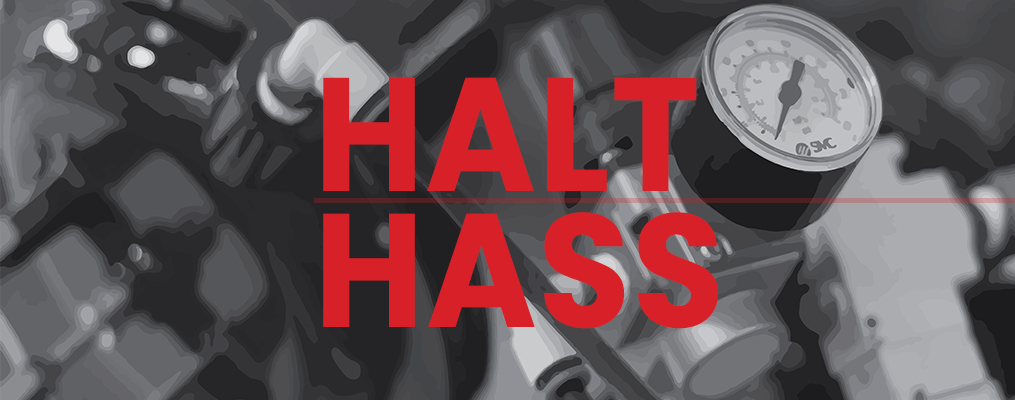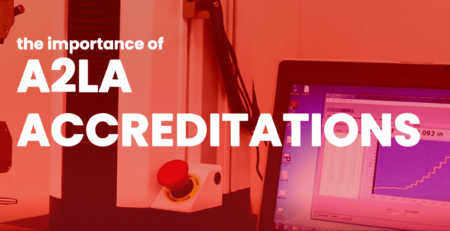Additive Manufacturing Testing Q&A
Joel Coffman2023-05-12T09:50:57-05:00Additive manufacturing is an adaptable and cost effective way to produce a variety of parts, from one-off specialty prints to mass production projects. This manufacturing process allows for a new level of mass customization without the time delays and costs required for injection molding. However, it is vital for the process of additive manufacturing to consider the same material characteristics as those parts produced through traditional manufacturing. Whether it is determining properties such as flammability, ultimate tensile strength or compression, additive manufacturing testing is key to provide the knowledge of how materials work and how designs can be improved for more reliable products.
Austin Reliability Labs (ARL) Reliability Engineer Ben Jones, an ASTM Board Member on Additive Manufacturing, answered some essential questions on additive manufacturing as well as the process of testing 3D printed items.
Q: What is the difference between 3D printing and additive manufacturing?
Ben: “Additive manufacturing is the building or manufacturing of a component by adding layer by layer to make a full piece. This could be applied to computer chips, where they build up each layer to make a functional chip, but it is most often used to describe a group of technologies that use plastics, metals, ceramics and more to build much larger components than a transistor on a microchip. 3D printing describes those same technologies, but it is more of an informal term. Industries and businesses use the terminology additive manufacturing while the general public and hobbyists general use 3D printing.”
Q: How does additive manufacturing testing work to improve the additive manufacturing process? What is the importance of testing?
Ben: “Testing for additive manufacturing parts should be as important to you as the part will be important to you or someone else. The best thing about testing for design and manufacturing is feedback. You know what part you are making. It’s not a guess. It’s not a hypothesis. It’s not an inference from other data. You have proved that it works or doesn’t. One feature of testing, particularly of testing additive manufacturing parts, is that it’s so easy to change things that are not working. One thing that we can do at our labs is do a complete 3D scan of the item for testing, compare it to the CAD model and find out where they differ, and then change the print model so that when it’s printed again it will be right. 3D scans also allow you to compare all the facets, so you can see all the high points and low points and make changes to fix them all. 3D scanning and additive manufacturing feed off of each other very well.”
Q: Why are there no standards for additive manufacturing? Hasn’t this technology been around for decades?
Ben: “There are standards for additive manufacturing, just not enough to receive a UL stamp on your 3D printed part. Each year we are filling in the gaps in both development, safety, part manufacturing, supply material and reproducibility of additive manufacturing. ASTM is establishing an Additive Manufacturing Center of Excellence to help advance additive manufacturing technical standards, education, training and more. ISO has also been working closely with ASTM to help fill in these gaps for standards, so very likely whatever this Center of Excellence produces or decides will have effects on 3D printing all across the world.”
Q: Why is it necessary to know the orientation and machine used for the production of a 3D printed part?
Ben: “The orientation of how you print and what machine you print on can cause substantive changes in your print. Depending on how something was printed, there might be slip or break planes added in your part that you don’t want. Just like composites, directions can matter. There are also significant material property changes depending on the printer you use, which is one reason why establishing some standards becomes difficult. This does not mean that there are just material property changes between different types of printers, such as between a Form2 printer and a Carbon printer. This means that between the same types of Form2 or Carbon machines, there can be changes. It is important to record the serial number and direction of the print, as well as the model that the product was made off of. This is for critical safety reasons, and only takes a moment and a few kilobytes on your hard drive. It’s worth it.”
For additional information on how we can help with all your additive manufacturing needs, please feel free to contact ARL for testing, our sister company SabeRex for production, or TekRex for design and development.






